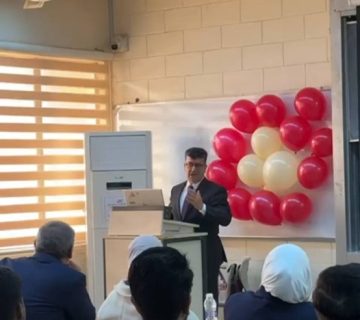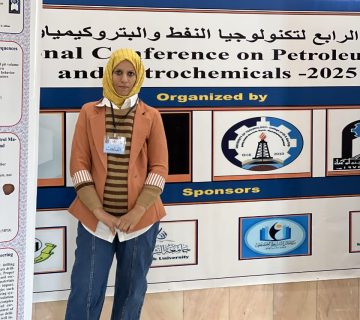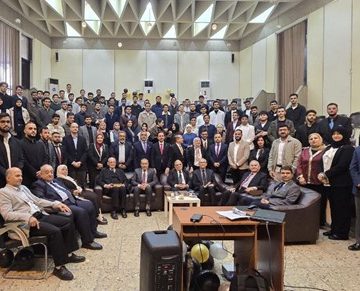After citing their article more than five times and appreciating their distinguished scientific efforts, the two teachers in the Department of Chemical Engineering, Assistant Professor Dr. Mahmood Khazzal Hummadi and Lecturer Entisar Mohsin Khudhair, received a letter of thanks and appreciation from the President of the University of Baghdad. The article titled “Heat Transfer and Hydrodynamic in Internal Jacket Airlift Bioreactor with Microbubble Technology”, and published in the Iraqi Journal of Chemical and Petroleum Engineering, is summarized:
Integration of laminar bubbling flow with heat transfer equations in a novel internal jacket airlift bioreactor using microbubbles technology was examined in the present study. The investigation was accomplished via Multiphysics modelling to calculate the gas holdup, velocity of liquid recirculation, mixing time and volume dead zone for hydrodynamic aspect. The temperature and internal energy were determined for heat transfer aspect. The results showed that the concentration of microbubbles in the unsparged area is greater than the chance of large bubbles with no dead zones being observed in the proposed design. In addition the pressure, due to the recirculation velocity of liquid around the draft tube, increased the retention time of microbubbles in the same area. Thus it was expected that their effect on mass and heat transfer phenomena would be positive for biological applications. For example the gas fraction volume of microbubble in the downcomer region is 0.0063, while with fine bubble diameter of 1 mm, this region was free from any bubble. Furthermore, the velocity of liquid in the center of ring diffuser would be 0.175 m/s, if the sparging system operated with bubble diameter of 100 micrometer, whilst would be 0.035 m/s with fine bubble diameter of 1 mm. The study also proved the importance of bubble diameter on the heat transfer in gas and liquid phases in the proposed design. Microbubbles gave greater responsiveness to stability and homogeneity in all parts of the bioreactor. Finally, this study concluded the efficiency of the proposed design with the microbubbles technology thermally and hydrodynamically.







